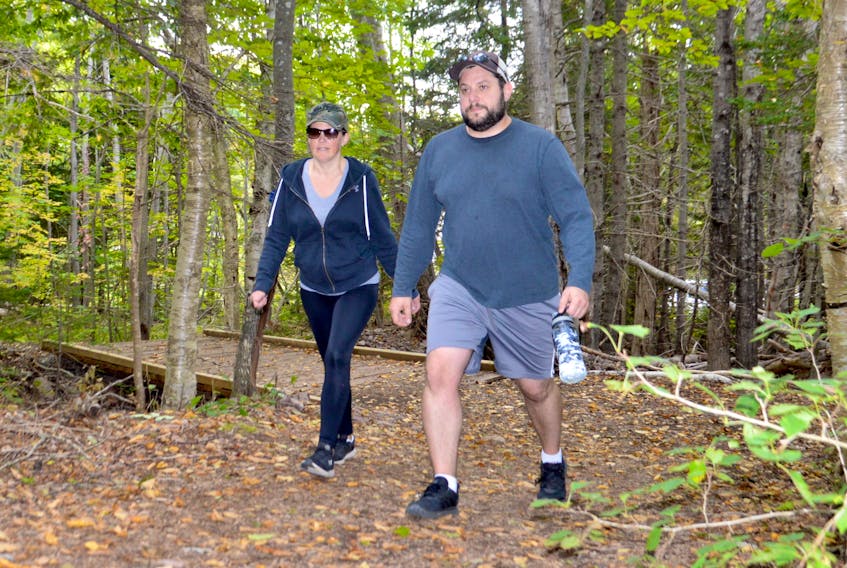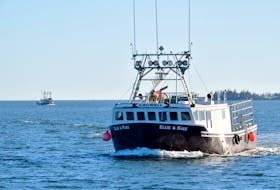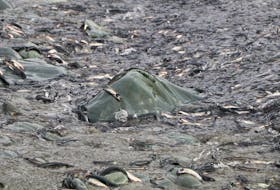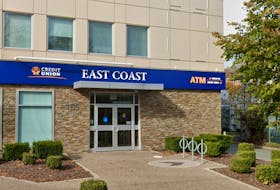SYDNEY, N.S. — Day trips and weekend getaways by Atlantic Canadians in search of fall colours will be key sources of traffic for operators trying to navigate the COVID-19 influenced fall tourism season in Cape Breton.
Despite the popularity of the contrasting, red, orange and golden foliage on the island, the autumn season, like the summer one before it, is expected to produce far less than average tourism numbers.

“We are hearing some anecdotal evidence that some of those weekends are looking really good especially in October,” said Terry Smith, CEO of Destination Cape Breton.
“We just tried to book a couple of rooms for a social media influencer who is coming into the Ingonish area and it was very hard to find a place that was open, so a number of places were completely booked up. Those sorts of things are positive but all in all, without Celtic Colours, in particular, it is certainly going to be down from what it was last year.”
Even with a busy fall, Tourism Nova Scotia data suggests the best-case forecast for tourism revenues to be around $900 million this year — a $1.7 billion decline from 2019.
A key factor in declining revenues comes after all regions of the province experienced significant declines in room nights sold as a result of the COVID-19 pandemic.
Cape Breton had experienced the largest percentage decline of 60 per cent, while the lowest declines are recorded in the Yarmouth and Acadian Shores (down 48 per cent) and Eastern Shore (down 46 per cent).
“It’s been devastating across the industry and there’s no sugar-coating that,” said Joann FitzGerald, chief marketing officer for Tourism Nova Scotia.
“But I think the bright spot, if you have the numbers for June and July for room nights sold it was a little better in July than it was in June. Again, still big numbers that are lost but if you are trying to find the bright spot that would be something and we would put that bright spot in the fact that it suggests because the bubble opened and people were more comfortable travelling around in July and August that that is why we saw some of those numbers be less bad.”
Smith said larger accommodations like hotels, motels, and inns really struggled during the summer as visitors from outside of Atlantic Canada stayed home. Those outside visitors who stay longer and spend more money make up 77 per cent of summer traffic in a normal year.
Self-contained units, including cabins, cottages and glamping units were among the operators to do reasonably well, though.

“Some golf courses and some restaurants have basically said they’ve been holding their own,” he said. “It hasn’t been a great season but they’ve been able to pay the bills. The ones that are struggling are the larger operators, the cultural and heritage attractions and museums and the retailers.”
To spur traffic, Destination Cape Breton launched several marketing campaigns trumpeting things like staycations, reminding people of ‘this amazing destination that is virtually in their backyard,’ Smith said.
“One of the things we know from regional visitors is that most of them have been here before so they know the beauty of the island the experiences they can have. For us, it was just reminding them.”
The campaign resulted in increased website traffic and saw many people exploring areas of their home they had not seen before or had not seen in some time, he said.
Collaborative marketing involving Tourism Nova Scotia and organizations such as Destination Cape Breton emphasized safety within the Atlantic Bubble, FitzGerald said. It also encouraged visitations around the province and bringing people in from other Atlantic provinces.
Campaigns have shifted focus to fall tourism and continue to encourage people to get out to explore over 200 tourism packages on the novascotia.com website, she said.
Restaurants and accommodations in urban areas such as Halifax are worthy experiences, FitzGerald said. As are wine tastings on mainland Nova Scotia, apple picking in the Annapolis Valley and viewing fall foliage in Cape Breton.
“In a typical year visitors would come in the fall in large numbers from all over the world to see our beautiful fall colours,” said Kelly Deveau, visitor experience manager for Parks Canada. “But as we know it is not a typical year but we’ve been working with Destination Cape Breton and Tourism Nova Scotia to target Atlantic Canadians and to get Atlantic Canadians to make Cape Breton a part of their travel plans in the fall. We do expect a slower fall season than what we are used to but we do anticipate that local traffic and people getting out to see the magnificent fall foliage.”
Nova Scotia Room Nights Sold (TNS Accommodations Database)
- 647,000 room nights sold year to date July 2020, a decrease of 56 per cent compared with the same period in 2019.
- 74 per cent decline in room nights sold in June (loss of 200,000 room nights)
- 67 per cent decline in room nights sold in July (loss of 250,000 room nights)
- To the end of July, Cape Breton has experienced the largest percentage decline in room nights sold of 60 per cent.
- Lowest declines are recorded in the Yarmouth & Acadian Shores* (down 48 per cent) and Eastern Shore (down 46 per cent).
- The decline in room nights sold in the Yarmouth and Acadian Shores region follows the decline of 22 per cent YTD July 2019, reflecting the ferry not operating.
- According to AirDnA data, for the period of January to August 2020, there were 227,000 room nights booked through sharing economy platforms, a decrease of 32 per cent compared to the same period in 2019.
- Room nights booked through sharing economy platforms were down by 40 per cent in July 2020 and 42 per cent in August 2020, compared to the same months last year.
- Visits to NovaScotia.com are up 74 per cent in August compared to 2019, which suggests people are interested in planning Nova Scotia vacations as a result of marketing efforts to local and regional audiences.
Parks Canada is reporting over 40,000 visitors to Cape Breton sites so far this year – a decrease of 72 per cent from the same period for last year.
A bright spot so far, as others have noted, has been an increase in local and Atlantic Canadian visitors.
Trends at Parks Canada campgrounds show weekends as the busiest times of the year and that trend is expected to continue through the Thanksgiving weekend and the rest of the fall.
Even with modest successes, Smith said tourism operators will need more support from the government, and he was pleased to see extended wage subsidies in the recent federal throne speech.
Passenger Enplanements at Halifax Stanfield International Airport
- As of the end of August 2020, enplanements reached 409,000, a decline of 71 per cent compared with the same period in 2019.
- For the month of August 2020, there were 29,000 passenger enplanements, a decrease of 88 per cent compared with August 2019.
Tourism Revenue Forecast (September 2020)
- Tourism revenues will not surpass $900 million this year. That’s a $1.7 billion decline from 2019’s estimate of $2.6 billion.
- Of the $900 million estimate, $600 million is from Nova Scotians travelling within the province, and $300 million is from non-resident visitors.
While that will help year-round operators, seasonal tourism businesses also need assistance.
“They have to really try to make enough revenue in the peak season in the summer that will sustain them through the winter and with those numbers being significantly down, it is really going to be difficult for some of these operators to pay their bills over the winter.”









